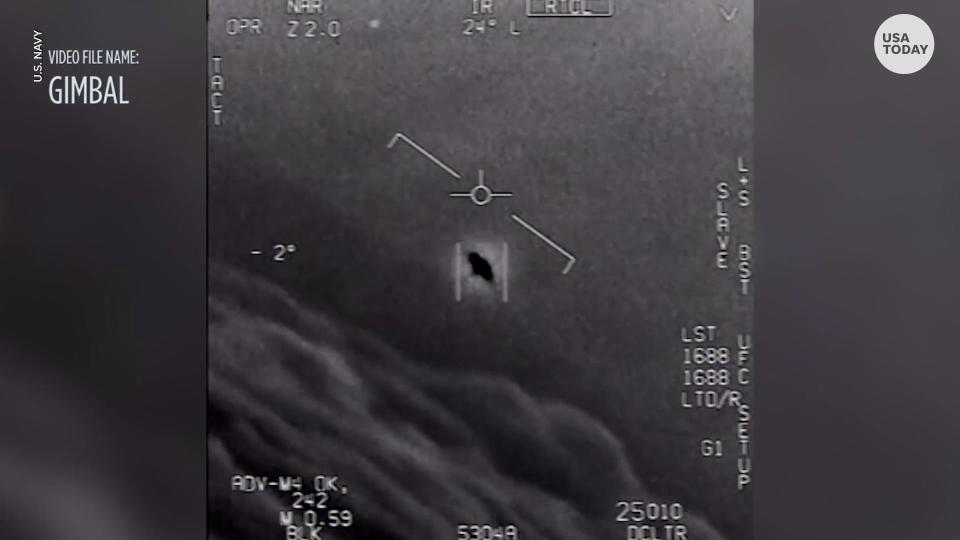As obsession grows with UFOs on Earth, one group instead looks for aliens across galaxies
At a time of mounting public interest in UFOs, the SETI Institute is looking not to Earth to find signs of advanced alien lifeforms, but to the vast cosmos.
It's been more than a year since Congressional leaders were regaled with public testimony – offered without proof – about shadowy government programs to retrieve and study downed extraterrestrial spaceships. In that time, the hearing has fueled a wave of docuseries, opportunistic marketing campaigns and speculation about UFOs, reigniting a public obsession that some researchers say is spiraling out of control.
The idea that, absent any immediate logical explanation, strange crafts sighted whizzing through our skies must surely be alien visitors seems to only continue gaining momentum.
But researchers at SETI aren't interested in the debate over whether UFOs sighted on Earth could be extraterrestrial in origin. For those astronomers, the best chance for humanity to answer the age-old question of whether we're alone in the universe requires turning our gaze beyond our own planet.
And maybe even beyond our own galaxy.
SETI begins 'extragalactic' search for advanced alien life

The SETI Institute recently began searching for signs of advanced extraterrestrial civilizations in distant galaxies outside our own.
Using the Murchison Widefield Array (MWA) in Western Australia, researchers began the hunt for "extragalactic" civilizations in more than 2,880 galaxies. In an August press release, SETI hailed the research performed by SETI Institute researcher Chenoa Tremblay and Steven Tingay, an astronomer at Curtin University, as the first attempt to search for signs of alien technology in galaxies beyond our own.
"Usually, the search for extraterrestrial intelligence (SETI) has focused on signals within our galaxy. This new approach goes further, looking at distant galaxies," the nonprofit organization said.
The radio array's large field of view allowed researched to look for technosignatures from other galaxies that would serve as signs of other civilizations harnessing large amounts of energy to send out powerful messages.
“This work represents a significant step forward in our efforts to detect signals from advanced extraterrestrial civilizations,” Tremblay said in a statement.
Groundbreaking search comes amid public interest in UFOs

Of course, many people believe aliens are already here.
That suspicion was only enflamed in July 2023 when former Pentagon intelligence official David Grusch testified to Congress about an alleged shadowy "multi-decade" Pentagon program to retrieve and study not only downed spacecraft, but extraterrestrial pilots. Grusch accused the government under oath of being aware of extraterrestrial activity since the 1930s and hiding the program from Congress while misappropriating funds to operate it.
The Pentagon, of course, has vehemently and repeatedly denied the accusations. But no matter: the damage was done.
Netflix released a docuseries. Brands like MoonPie jumped on the bandwagon. And conspiracy theories flourished.
Amid the hoopla, politicians and government agencies were compelled to respond.
In Congress, lawmakers introduced two pieces of legislation – one requiring the release of some UFO records and another that would create a reporting mechanism for commercial pilots.
Last September, the Pentagon's office to investigate UFOs, which the government now refers to as unidentified anomalous phenomena (UAP,) revealed a new website for the public to access declassified information about reported sightings. Even NASA got involved, releasing a report declaring that no evidence existed to confirm the extraterrestrial origins of UAP while also appointing a director of UAP research.
Growing belief in alien visitors 'no longer a quirk?'
Not all agree that the growing belief aliens have visited Earth is without its pitfalls.
In an article published Monday on the Conversation, Scottish philosopher Tony Milligan argued that "the belief in alien visitors is no longer a quirk, but a widespread societal problem."
For Milligan, the danger in believing in conspiracies and cover-ups goes beyond potentially undermining democratic institutions: It just doesn't make sense, he argues.
"Given the vast distances between star systems, it seems odd we’d only learn about them from a visit," Milligan wrote. "Evidence for aliens is more likely to come from signals from faraway planets."
And that's just what SETI hopes to find.
While SETI's deep-space search did not find any signs of alien technology, the researchers maintain the method could be used for future searches in the intergalactic haystack.
The research was published Aug. 19 on ArXiv.
"This work is new and novel," Tingay, director of the Murchison Widefield Array, said in a statement, "but also paves the way for future observations with even more powerful telescopes.”
Eric Lagatta covers breaking and trending news for USA TODAY. Reach him at [email protected]
This article originally appeared on USA TODAY: SETI begins 'extragalactic' search for alien life amid UFO craze
